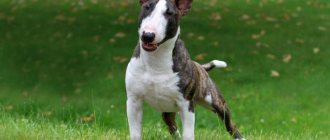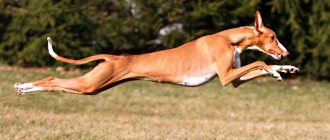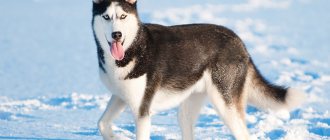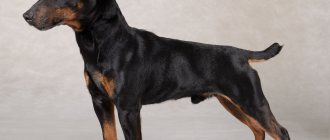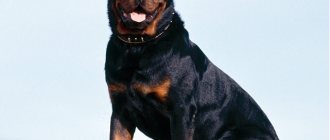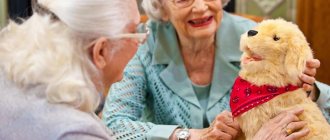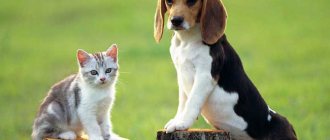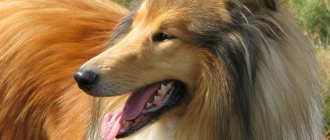Description and features
If you look at the catalburun in profile, you won’t see anything unusual. An ordinary fine dog, slender, strong, clearly related to hounds, or more precisely, to pointers. That's what they call her - the Turkish Pointer. But if you look at the front of this dog’s face, you will be very surprised.
Here a surprise awaits you - a bifurcated nose, sometimes so much so that the two halves of this organ do not touch each other. It looks very unusual and even strange. The dog was named catalburun (chatalburun) precisely because of its nose. Translated from Turkish, “burun” is a nose, and “katal” (“chatal”) is a fork. In other words, this is a fork-nosed dog. To be more precise, a Turkish fork-nosed pointer.
The Catalburun dog has an excellent sense of smell, even with such a nose! For hunters, rescuers and police, such a dog is just a treasure. But the main problem is that this breed is still not recognized by the International Canine Association. Therefore, its cultivation and promotion is an activity for the elite.
But it would seem, why does she need certificates? Her document is an aristocratic appearance. In terms of build and appearance, it most closely resembles an English pointer. Catalburuns have the same short, hard hair, drooping ears, slender, strong body, endurance, and speed. Weight is approximately from 15 to 30 kg. The height of females and males varies slightly, on average reaching 45-63 cm at the withers.
The calling card of this breed is the famous sculpted stance. The forknos in a special position freezes at the sight of game, pointing to it to the owner. You look at a dog frozen in a hunting pose, and it seems that in front of you is a postcard from an old album called “ Katalburun in the photo during the hunt.”
Health
With an average life expectancy of 12–14 years, Turkish Pointers have a fairly modest list of breed diseases. However, what kind of statistics can we talk about with such a small number of the breed and vice versa...how susceptible are dogs to genetic diseases, if with a population of several hundred there are tendencies towards pathologies? The questions are largely philosophical and we can talk about them when the breed begins to develop, if it does. Modern Catalburuns are prone to three diseases typical of Pointers:
- Joint dysplasia.
- Dermatitis of various etiologies.
- Hormonal disorders.
You shouldn’t rule out possible eye problems, since all Pointers and their immediate family are prone to them. Catalburun puppies are born with a split nose, and this does not exclude breathing problems and a tendency to inflammatory processes.
Kinds
The Catalburun breed does not have a standard, so these dogs can come in different colors and even vary in size. The only thing I can add is that freckled dogs with the main coat color of a light gray or white shade are most often popular.
Hemp or small spots can be of completely different colors - red, yellow, red, brown, dark gray, brown, black. We referred to the similarity with pointers, so a few words about this wonderful breed, since they can be mistaken for distant relatives of our dog.
The English Pointer is an old British breed of pointing dog; the first mention of them dates back to the mid-17th century. These dogs were bred specifically for hunting and were used mainly for this purpose. The characteristic appearance of a smooth-haired slender dog, hanging ears, grace and elegance, as well as a noble pedigree are the main characteristics of this glorious breed.
And also, of course, the famous hunting stance with one paw raised, head lowered and fur raised. This is how they “mark” the found game for the owner. A dog entering the royal court. Perhaps many people do not have such a famous pedigree.
The standard color is one- and two-color. Single-color specimens come in red, coffee, black and all shades of fawn. Two-colored - black-piebald, coffee-piebald, yellow-piebald, red-piebald. The character, external parameters, behavior and working qualities are very close to our fork-nosed dog.
Well, a few words about another dog, the Old Spanish Pointer, whose appearance is especially close to our hero. This is a very rare breed of dog, so few people know about it. The most distinctive feature, in addition to all the qualities inherent in pointers, is the same forked nose as that of the Turkish catalburun.
Estonian Hound - description of the breed
The Estonian Hound is a hunting dog of small stature, lean, proportional build, muscular, with fairly strong bones and some grace.
The height at the withers of the male is 44-52 cm, the female is 43-49 cm. The weight of the male is 16-25 kg, the female is 11-20 kg. The dog's back line is straight. The croup and back are wide. The skull is moderately wide with somewhat curved shapes. The transition line to the muzzle is smooth. The muzzle itself is straight and elongated. The brow ridges are very distinct.
The nose is large, black, wide and fleshy. The neck is of medium length, rounded and muscular, without folds. Eyes - dark brown. The dog's cheekbones are lean, its jaws are developed and strong. The teeth are quite large, white, 42 in number. The hound's ears hang close to its cheeks. They are quite long, thin, rounded at the ends and covered with short hair. The base of the ears is located along the line of the eyes.
The front legs of the Estonian Hound are lean and muscular, and are equal in length to approximately half the height of the dog at the withers. The hind legs are more powerful and bony, also muscular. The length of the thigh and lower leg are identical. When the dog moves, the knee joints of the hind legs should not turn either inward or outward. The paws are elliptical in shape, the toes are closely pressed. The paw pads and claws are large and dense.
The dog's tail is thick at its base, gradually tapers towards the end, and is covered with thick hair. The shape of the tail is saber-shaped, its length usually reaches the hock joint. The dog's coat is short, rather hard, smooth and shiny. The undercoat is thin and very short, poorly developed.
History of the breed
The homeland of this dog is considered to be the city of Tarsus (in ancient times Tarsus), which is located in the Turkish province of Mersin. This city is known as the birthplace of the Apostle Paul. The exact time of the appearance of fork-noses is difficult to establish, but it is definitely known that they were already present in the mid-17th century, and even at that time it was not the first day.
How this miracle appeared is now difficult to say. Perhaps this phenomenon arose due to close family ties. A consequence of inbreeding, a form of homogamy, the crossing of dogs within the same genus. Or maybe this dog got this charm by chance from other famous fork-nosed dogs.
After all, there have already been such phenomena in history; we mentioned the ancient breed of Old Spanish Pointers, otherwise known as Navarrese pointers. An almost extinct breed, but thanks to enthusiastic cynologists, it was restored and exists to this day, although it is very small in number.
Unfortunately, catalburuns are also very rare. In the heart of their breeding, in Tarsis, about 300 specimens can now be counted. There are also several such dogs in Russia and other countries, but you can literally count them on your fingers.
Historical reference
It’s worth starting with the fact that all Turkish dog breeds are rare for the modern canine world. You can bet that most of your fellow dog walkers do not know such breeds as Akbash, Kangal, Kars, Malakli, and all these four-legged dogs come from Turkey. With the Catalburun it’s even more complicated; these unique dogs are rare in Turkey itself; even in Ankara, not many people know about the existence of such a breed. Fans of four-legged animals from the northern regions of Turkey will tell you about any national breed, but they will talk about Catalburun as if it were a mystery. What kind of unknown beast is this Turkish Pointer?
The casket opens quite simply. The Pointer is a gun dog for working on water and land. The four-legged animal tracks the game with the help of a keen sense of smell and vision, takes a stance, indicates the direction to the hunter and, after a command, either picks up the bird or drives out the animal. Let's remember the history of Turkey, what did its people do for a living?
Character
The character of the Catalburun dog is also similar to the Pointer. Dogs are smart, quick-witted, moderately cunning, adore their owners, and love children very much. In the circle of their family, they are playful, loving, gentle, caring, sometimes slightly annoying and fussy, but this is due to an excess of emotions.
Most often, the dog is calm, balanced, self-sufficient, and it is not difficult to call him to order. He responds to respectful treatment; he should be treated only on the basis of mutual understanding, delicately, without shouting or rudeness. Still an aristocrat...
But with strangers he can be unfriendly and stern. In addition to the profession of a hunter, he gets along well as a security guard and a watchman. No one will enter your home without his knowledge and consent. The same applies to other people's animals.
If a stranger invades his territory, he will be immediately attacked. Moreover, the transformation from a “darling dog”, so calm and affectionate, into a barking “evil Cerberus” is carried out with lightning speed. He is driven by blind rage, and the dog enters such an angry state that he may not even hear your stopping commands.
The Turkish Forknoss is very trainable, matures earlier than other breeds, and is very inquisitive. Therefore, it will not be difficult to train him. This pet will be an excellent walking companion, comrade, assistant and family member.
Saluki
Salukis are one of the most ancient representatives of greyhound dogs, used since ancient times for hunting. Some experts believe that this is the oldest breed in the world. Quite possible, since the oldest image of these dogs, found in an Egyptian tomb, dates back to the 35th century BC.
Among the Arabs, Salukis were considered as valuable as Arabian horses. The dogs lived in the same houses with family members, and to the hunting place they did not run next to the rider, but rode on horseback so as not to get tired. This is honor and respect!
Now Salukis are used not only as hunting dogs, but also as pets.
There are several types of Salukis, but they all have a lean, slender body with long, strong legs and a smooth coat, and a graceful head with large, floppy ears.
All Salukis are extremely slender and at the same time very hardy; they are able not only to run quickly, which is very important in hunting, but also to hold the prey until the owner arrives.
Interesting fact. Salukis are included in the Guinness Book of Records as dogs capable of reaching speeds of up to 70 km/h.
Salukis have a very temperate character, they are very attached to their owners and children, but do not tolerate rude behavior towards themselves. These dogs bark only when absolutely necessary; they love an active lifestyle and communication with their owner.
The price of one puppy reaches 40 thousand rubles.
Nutrition
The dog eats with great enthusiasm and is unpretentious in his diet. Just try not to accustom him to harmful goodies from the table. No sweets, pastries, smoked meats, canned food - all this is harmful to him. His food is lean meat and fish, vegetables, cereals, dairy products, eggs, vegetable oil. If you decide to feed him natural food, add vitamins and minerals. Don't forget to occasionally pamper your pet with a bone!
It is easier to purchase ready-made balanced food for active dogs. Preferably “premium class” or “holistic” (natural based). Sometimes, no more than once a week, you can give pasta and potatoes. And always keep an eye on the water in the cup. An energetic dog needs fresh and clean water.
Socialization
Catalburun dogs are ideal in the house. Silent, calm, balanced. In the owner’s family, the little one can “get” the fork-nosed dog in any way he wants, and on the street the dog happily runs and plays with the little ones. An unfamiliar guest in the house will cause the pet's close attention; he will begin to monitor the guest's every move. If you adopted your dog as a puppy (early socialization), the Turkish Pointer will not have problems with other pets. The cats in the house are members of his own pack for him.
However, on the street, the cataluburun's hunting instincts instantly turn on. And beware, game! And it can become not only a sluggish chicken, but also the neighbor’s favorite cat. Therefore, in an urban environment, it would be better to keep the fork-nosed dog on a leash to avoid any trouble. Again, the catalburun is always not averse to measuring his strength with other males and trying to get into a battle with them. True, he nobly pays no attention to small dogs.
Reproduction and lifespan
The price of the Catalburun breed can be so high in some places that you can’t help but think – maybe you should start breeding them yourself? But we must not forget that with any rare breed there may be nuances and difficulties during breeding. Moreover, you are unlikely to be able to officially place the puppies later. However, here are some tips for breeding these dogs.
- It is better to breed a girl after 2-3 heats, nothing good will happen before.
- Boys are ready for mating at the age of 6-8 months.
- It is advisable to hold the wedding on the territory of the groom or in another convenient place, but under no circumstances on the territory of the bride.
- Before the process, you can walk the dogs, but you should not feed them.
- The second, control mating is carried out no earlier than one day after the first.
- When choosing a puppy from the same litter, follow the old method - take a closer look at which one is the most active and inquisitive, the first to run up to food, and he will be your friend. In addition, examine the puppy for the obligatory “dog charms” - a moist nose, clear and attentive eyes, warm ears with delicate fur, not very thin, a clean mouth, straight legs and a beautiful color. Preferably not too much white.
If you carefully look after your beloved dog, feed it properly, and take it to the vet on time, it will live to at least 14-15 years.
How to choose a puppy
It is recommended to adopt puppies of the Armenian Gampr breed no earlier than two months of age. While still a puppy, your chosen one should be inquisitive and brave. Observe his behavior and take the most active one. In order to check the baby's health, touch his stomach; it should not be swollen or hard, and there should be no irritation on the skin.
Inspect the ears, they should be clean and free of unpleasant odor. From improper maintenance, puppies can develop rickets; this is expressed as peas on the ribs, which can be felt if you touch them with your fingers. Only on the bends of the paws are there slightly protruding cartilaginous points.
Description of the Armenian Gampr breed:
- Head. Large, without prominent angles, not thin. The skull is wide, smooth transition from the forehead to the muzzle. Smooth forehead, powerful jaws. The ears are located just below the eye line. The eyes are small, almond-shaped, slanted, deep-set, somewhat darker than the color of the coat.
- The teeth are white and closely spaced. Scissor bite. The neck is muscular and of medium length.
- Frame. Elongated shape, not due to the lower back, but due to the chest. The chest is deep and wide, falling below the elbow joint. The belly is slightly tucked up and is a continuation of the chest line. The back is straight, wide, muscular and strong. The loin is short. The croup is straight, elongated and wide.
- Tail. Set on high, lowered when calm. When moving or in an irritated state, it takes on a crescent shape over the back.
- Forelegs. Straight, parallel to each other. The wrists are massive and long, when viewed from the side they are set obliquely, but when viewed from the front they are parallel.
- Hind limbs. Straight and parallel to each other, with well-defined knee joints.
- Paws. Sturdy, strong with soft pads.
- Wool. On the forelimbs, ears and muzzle - short, in other areas either with elongated guard hair or with thick short hair.
- Color. Any color is allowed, with a darker mask on the face. Brown and liver colors are undesirable.
Care and maintenance
Catalburun care is minimal. A couple of times a week, stroke it with a special glove or a damp towel to collect lost hairs. And if you run your hand over his sensitive skin, he will be simply happy!
During molting, you can do this more often. Brush your teeth, ears and eyes periodically, about once every 7-10 days. And sometimes trim the nails if the dog has not ground them on hard surfaces. As it gets dirty, you can bathe your dog, especially if it lives in an apartment with you. Just dry it immediately with a towel.
His health is good. True, there are specific problems - lop-eared dogs are susceptible to otitis media. And his famous forked nose can also sometimes become inflamed from a cold. Try not to overcool your dog, especially since his coat is quite short and he is genetically predisposed to heat. In Turkey they just live on the streets.
And our climate is harsh, in winter the dog will need to be insulated for a walk. And under no circumstances leave it outside for a long time in winter. You need to walk them for a long time; these dogs need good physical activity, without which they quickly get fat and start to get sick. Don't forget to get your vaccinations on time. When going to the vet, check the condition of the skin for dermatitis, joints and the thyroid gland.
Education and training
Catalburun shows average training abilities. He is smart and quick-witted, but requires a special approach. In general, like any other hunting dog. His energy and desire to work allows him to achieve good results. Consistency and regular repetition of the material covered are very important.
In addition, the closer the relationship between the owner and the student, the more obedient and capable he will be.
Price
The breed is very rare, if you do not plan to go bird hunting with this dog, you probably should not get this dog. He's not a lapdog at all. Moreover, to purchase it you literally have to go to Turkey.
It costs less there, and the breeders are more reliable. The average price of a puppy ranges from $700 to $1,200. And outside the historical homeland, the price can be absolutely anything. There is demand, but supply is limited.
Slugi
Slugi is a rare and ancient breed of greyhound originally from Africa. It is distinguished by its high growth, which can reach 72 cm. Their disposition is affectionate, but a little capricious. They obediently follow house rules and prefer to be the center of attention. These pets are active and energetic and easily get along with children.
The price of a puppy starts from $500.
Interesting Facts
- By the way, the same Navarrese pointers, which are considered the ancestors of the Catalburuns, gave rise to another breed - the double-nosed Andean hound from Bolivia, a dog so rare that it is difficult to even see it.
- These dogs are not only the best bird hunters, especially partridges. They are excellent customs officers. Their unique sense of smell is used during customs control to detect weapons and drugs.
- Catalburuns are one of those breeds that are susceptible to a split palate, the so-called “cleft palate.” This is a congenital defect condition; a dog with such “split” palatal tissue may be considered a defect.
- Some dog experts believe that the Navarre hounds were not the ancestors of the Catalburuns, but, on the contrary, they themselves descended from them. But Turkish fork-nosed cops are much older, and they appeared in ancient Greece.

